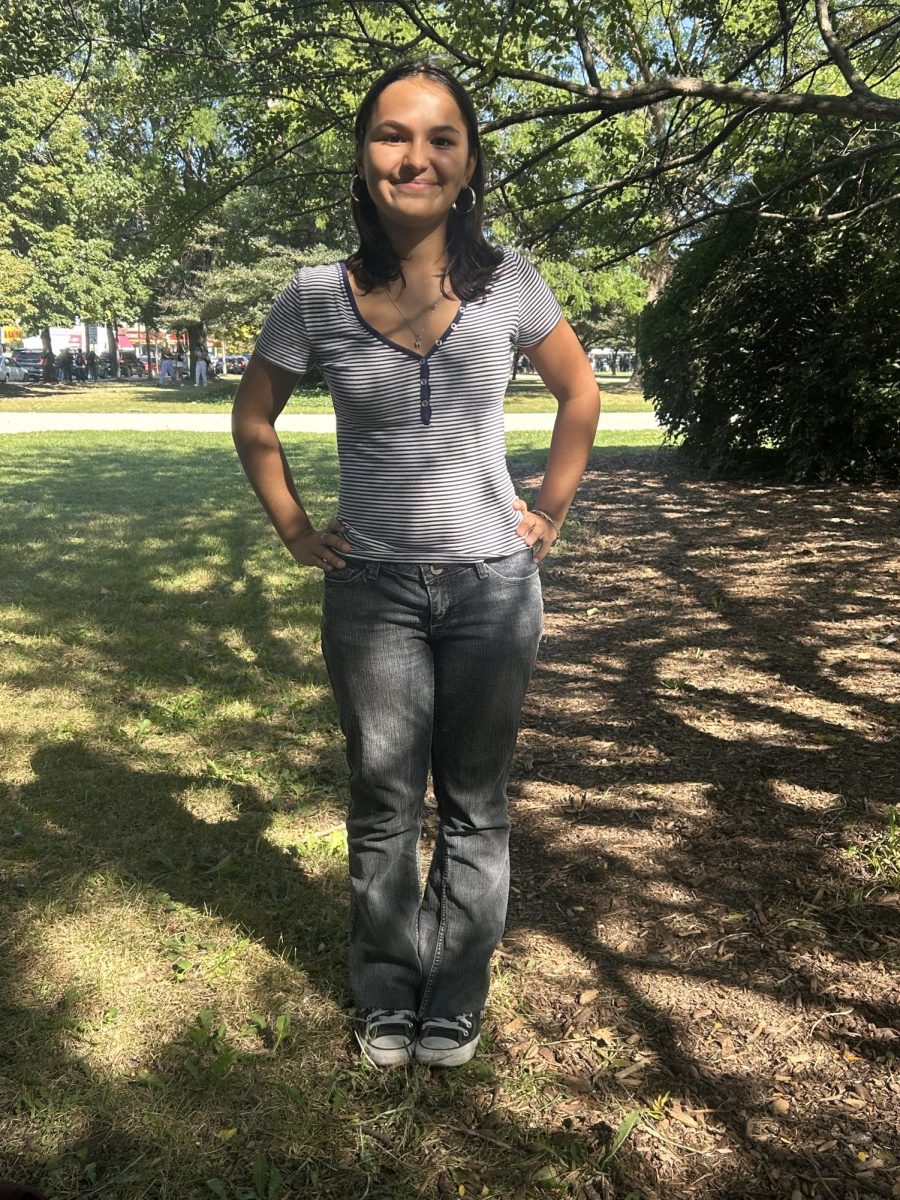By Bianca Sanchez
A goateed man – with a mustard and, as crayon boxes kindly call, Fern colored baseball hat perched on his head and skateboard on his back – is one of Mason Maj’s Div. 666, latest graffiti characters. With a stern and focused face, the character looks somewhat like the street version of Cobra Bubbles from Lilo and Stitch. A carefully crafted clutter of yellows, oranges, and black make up his torso. His bottom half replaced by the word “SOUr”.
“Lately I’ve been going for that type of a style,” Maj said. “With the weird character and the weird face and then just a bunch of stuff going on. So you see SOUr, the ‘S’, I don’t know if you can read it or not, the ‘O’ and the ‘U’ and the lowercase ‘r’. I just like all the crazy stuff going on.”
Maj, “The Devil,” he exclaimed lifting his hands to his head, proud of his devilish division – is a skilled graffiti artist. From a neighbor’s fence to his garage he has been doing graffiti art for three years.
“I’ve always been an artist in general,” Maj said. “But graffiti is always around, especially in Chicago. So it’s always grabbing my eye.”
He started gravitating towards graffiti style three years, thanks to the help of his neighbors.
“My neighbors, Nick Brade and Nick Coursey, yes, they have the same name and are stepbrothers, they’re in college now, they kind of held my hand through it [learning to do graffiti art],” Maj said. “They held my hand by showing me the ‘way’ of graffiti, how everything pieces together. They were the ones that told me a graffiti ‘name’ has four letters, mainly because it is easier to write and keeps letters in a smoother flow.”
Their relationship went past the paper and markers.
“We used to skateboard all the time, and they later on introduced me to graffiti, Maj said. “Although I have passed them in skill now, I still remember them as the people who showed me what I now love. They set the foundation, and we always had a blast. I used to have ramps in my backyard, and all day we would skate and draw. Summers consisted of swimming and skateboarding non-stop. To this day I wish they would come back from college.”
According to the 1984 book Subway Art, graffiti art first reached pop culture in the 1960s when young and bored New York City teens began scribbling their name and street numbers on any blank canvas in town. Soon, tags like “Taki 183” and “StayHigh 149” became household names. These tags were initially used to define gang territory, but later evolved into a full art form. Artists began experimenting with stylistic choices, actually putting thought into the curves and sharp points of letters. Throughout the next few decades, graffiti continued to evolve from illegal scribbles, to train side masterpieces.
Today, graffiti has made its way into classroom, and not just in student doodles. Ms. Wain, a Lane Art One teacher, dedicates a whole unit on graffiti inspired art.
“We do a skateboard project. We start that project by talking about graffiti and graffiti style, and we practice some graffiti lettering,” Wain said. “Their design is supposed to be inspired by graffiti art or some other current famous street artists.”
Maj took Art 1 last year and is currently taking Ms. Faletto’s Printmaking 1 class.
“These two classes were my first art classes,” Maj said. “I had always drawn on my own. They really haven’t made me a better or worse artist, only that they have shown me a more wider variety of arts.”
Maj realizes and appreciates graffiti’s origin. However, he insists there is more to graffiti than tagging.
“People think that graffiti is all about tagging up buildings, like what you see on Chicago streets – and that’s really where it came from people doing it on the streets – but it’s a lot more when people really put in their imagination,” Maj said.
Others share this opinion that graffiti is better when beautifying a space.
Ms. Chisholm, another Lane Art teacher, believes there is a big difference between tagging and conceptualized graffiti art.
“I think when people tag they don’t have a message or what they want to say generally they are tagging some offensive word or just their name,” Chisholm said. “But when people make murals or an image that has taken more time, they have really thought about what they want to put on the wall, which is in my opinion, is what makes an art piece an art piece.”
Maj challenges those who believe that graffiti artists only do their work to get their name out.
“Graffiti is used to make ideas or drawings in your head possible, and although people use it to get out there, they also use it as an idea outlet.”
To prove there is more to his art than his name, Maj has worked to develop his own style taking elements from past artists and including his own flare, thinking about what he wants to paint or draw before carrying it out.
“I like to do cartoons and stuff like that, but they have a realistic edge to them,” Maj said. “I like to do whatever comes to my mind but organized, it’s not just out there, scribbles, and no one knows what the heck is going on.”
His first experience as a paid graffiti artist was arranged through a family friend in August.
“When I painted the lady’s fence it ended up raining,” Maj said. “I had to wait it out for about two and a half hours before I could start again because it was too wet to paint. She was real nice, but I was a bit unsure of what the final product would be since it was my first time painting for another person on their fence. A little nervous you could say. I painted these abstract trees and outer space background and they loved it. At least they said they did.”
Like artists before him, he has his tag name Sour.
“Sour just came to me, I have no idea how though,” Maj explained. “Four letter words are easy to write because they are short, but maybe I thought of sour skittles?”





